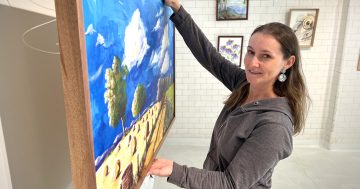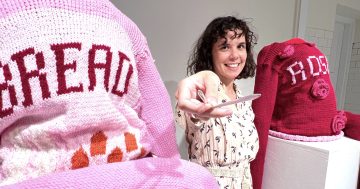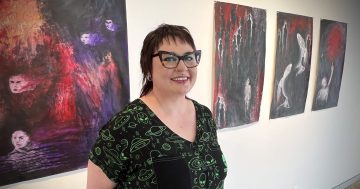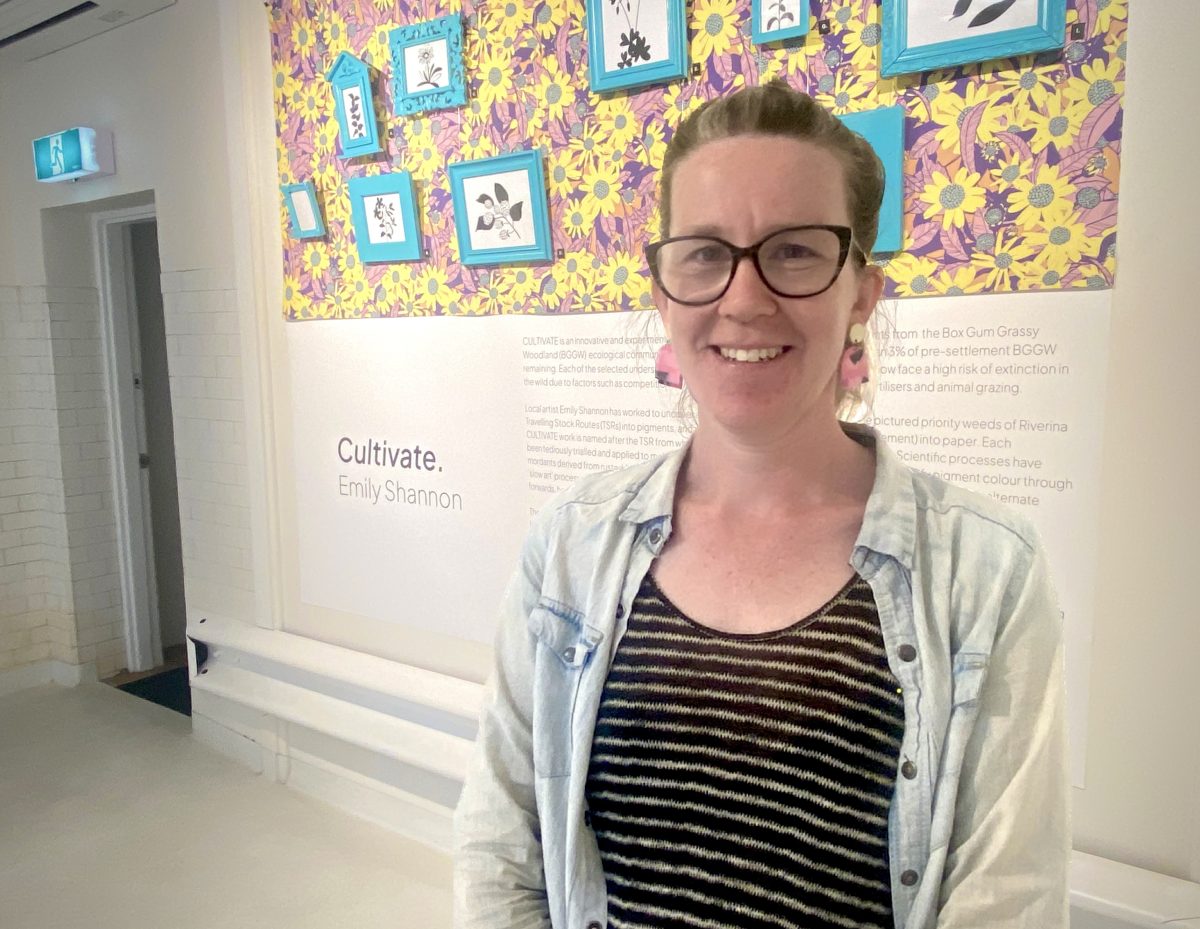
Emily Shannon’s ‘Cultivate’ is showing now at the Ambo Gallery on Johnston Street. Photo: Chris Roe.
Wagga art teacher Emily Shannon’s new exhibition ‘Cultivate’ is an exciting mix of art, science and ecology and is very much a live experiment that continues to unfold on the walls of the Ambo Gallery.
Horse poo paper, botanical pigments and chemical combinations collide in a carefully curated collection of prints that pose questions about the fragility of our native plant species.
Emily’s enthusiasm for the project is infectious as she explains the prints, plants and chemistry on display in the Johnston Street creative space.
“In some ways, I’m a science-led practitioner because I delight in experimenting and exploring the natural parameters and properties of materials I use and that’s really at the core of what I’ve been doing,” she said.
“I think as artists, we’re often unaware of the processes that come before, like the making of the mediums and paint, and even the paper, because we can just walk to the shops and buy them.
“I wanted to create aesthetically pleasing work where I had made every single part of that artwork.”
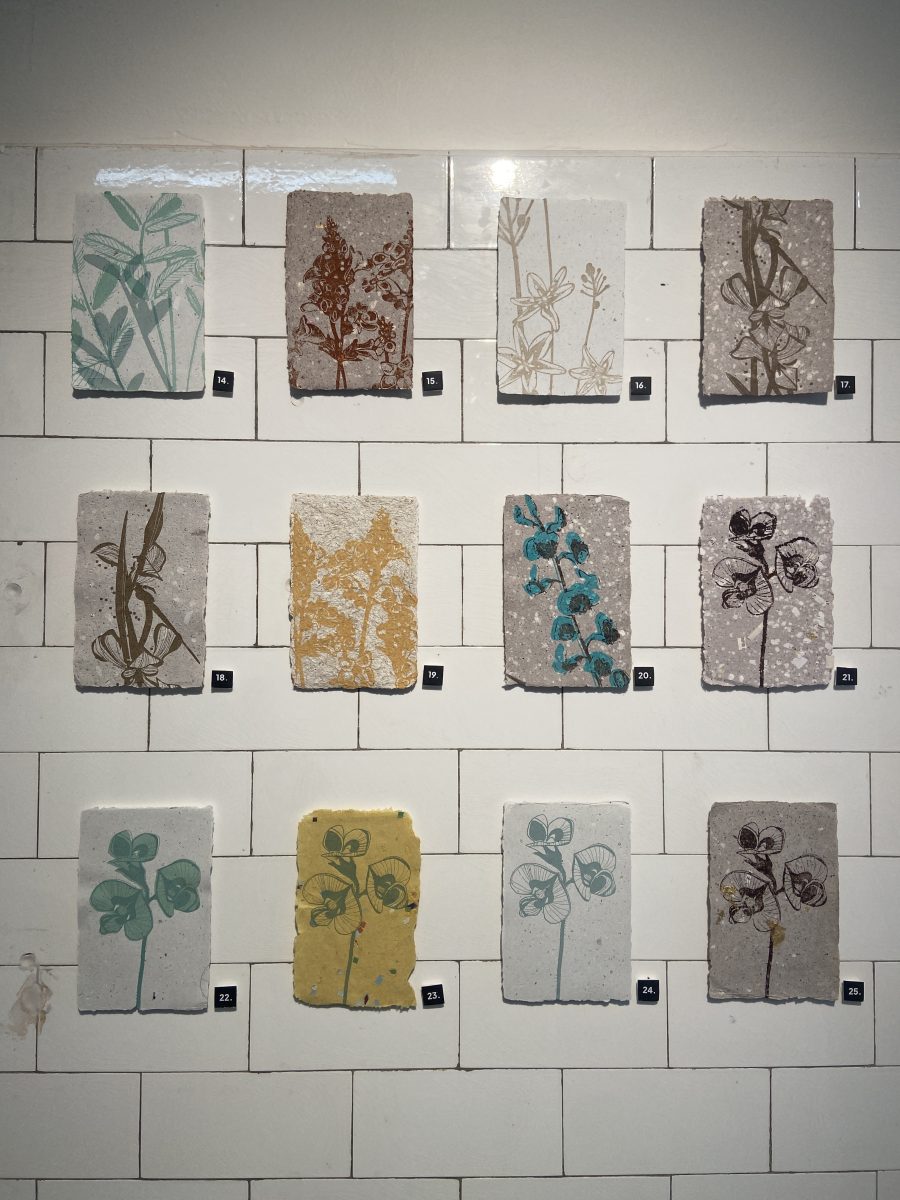
Emily is proud to include examples of success and failure in the journey to create pigment and paper. Photo: Chris Roe.
Emily said the germ of the idea began during the punishing COVID lockdowns in Melbourne as she and her three primary-aged children explored their limited local environment and began turning found objects into art and craft.
She began experimenting with traditional ink-making techniques, turning acorns and rusted iron into coloured mediums and then expanded the project to create paper and “lake pigments” using local botanicals.
“I realised that with the colours I was generating from different plants and flowers, that these weren’t just colours, they’re actually alive,” Emily said.
“That just opened all these chemical doorways and areas of research where I could play around with pH (acidity), or I could play around with other mordants (dye fixatives) and alter colour, just like a natural dyer does and has done historically.”
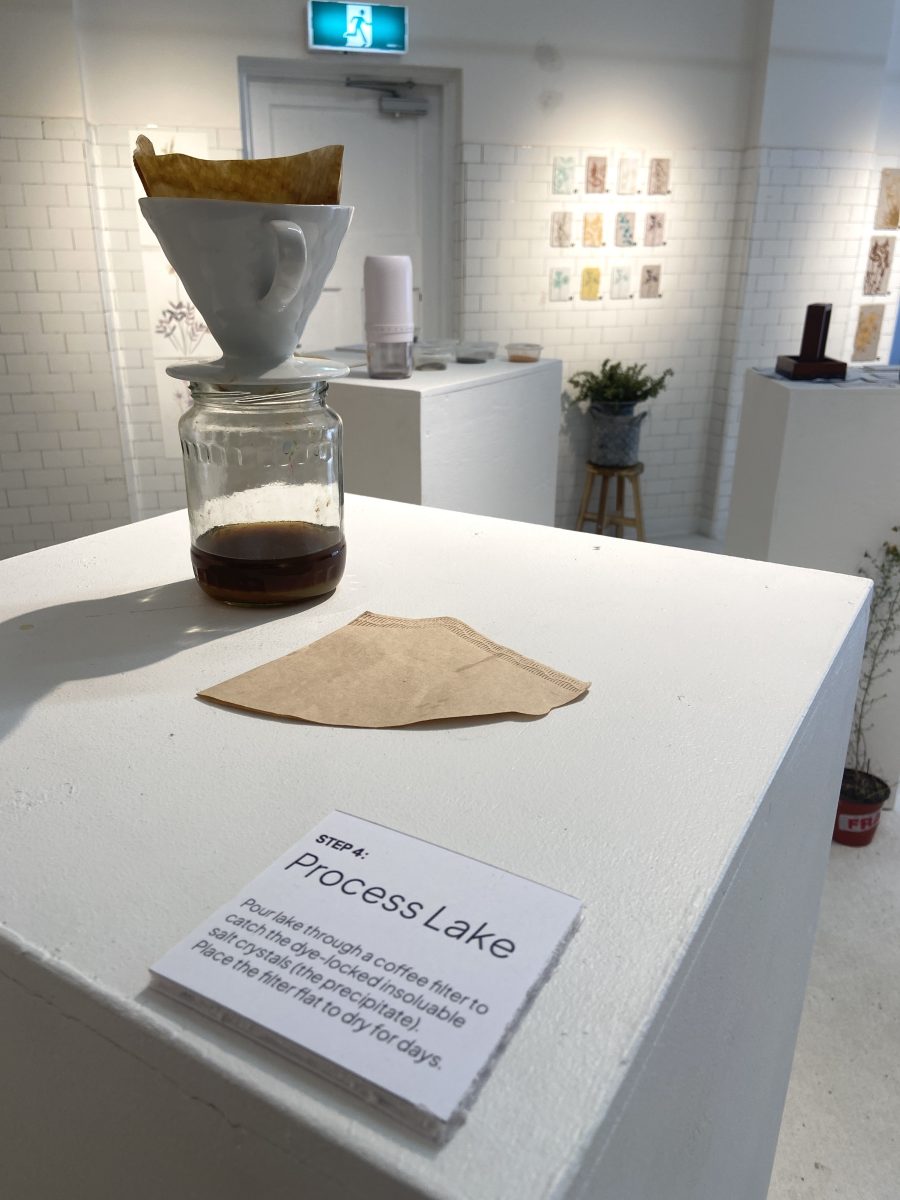
The process is as important as the product in Emily Shannon’s exhibition ‘Cultivate’. Photo: Chris Roe.
With Wagga City Council’s support through the Wagga Annual Grants Program, Emily tightened the parameters of her experimentation to highlight the plight of vulnerable plants from the Box Gum Grassy Woodland (BGGW) ecological community.
Cultivate explores processes that transform priority weeds of Riverina travelling stock routes (TSRs) into pigments and uses agricultural waste (including horse poo) to create paper.
Emily has chosen to represent several species that were once plentiful in the Riverina but now face a high risk of extinction from invasive weeds, nutrient deposits from fertilisers and animal grazing.
“I arrived at the idea of screen printing because you can apply a very thin layer of paint to paper, which will sit quite nicely, but then also you can start to combine two different paints,” she said.
“This is where the chemistry comes in because you can have one paint that is quite acidic and it shifts the colour of the first paint so, for example, you can end up having blue and yellow making red, which in art is not possible, but in science it is.”
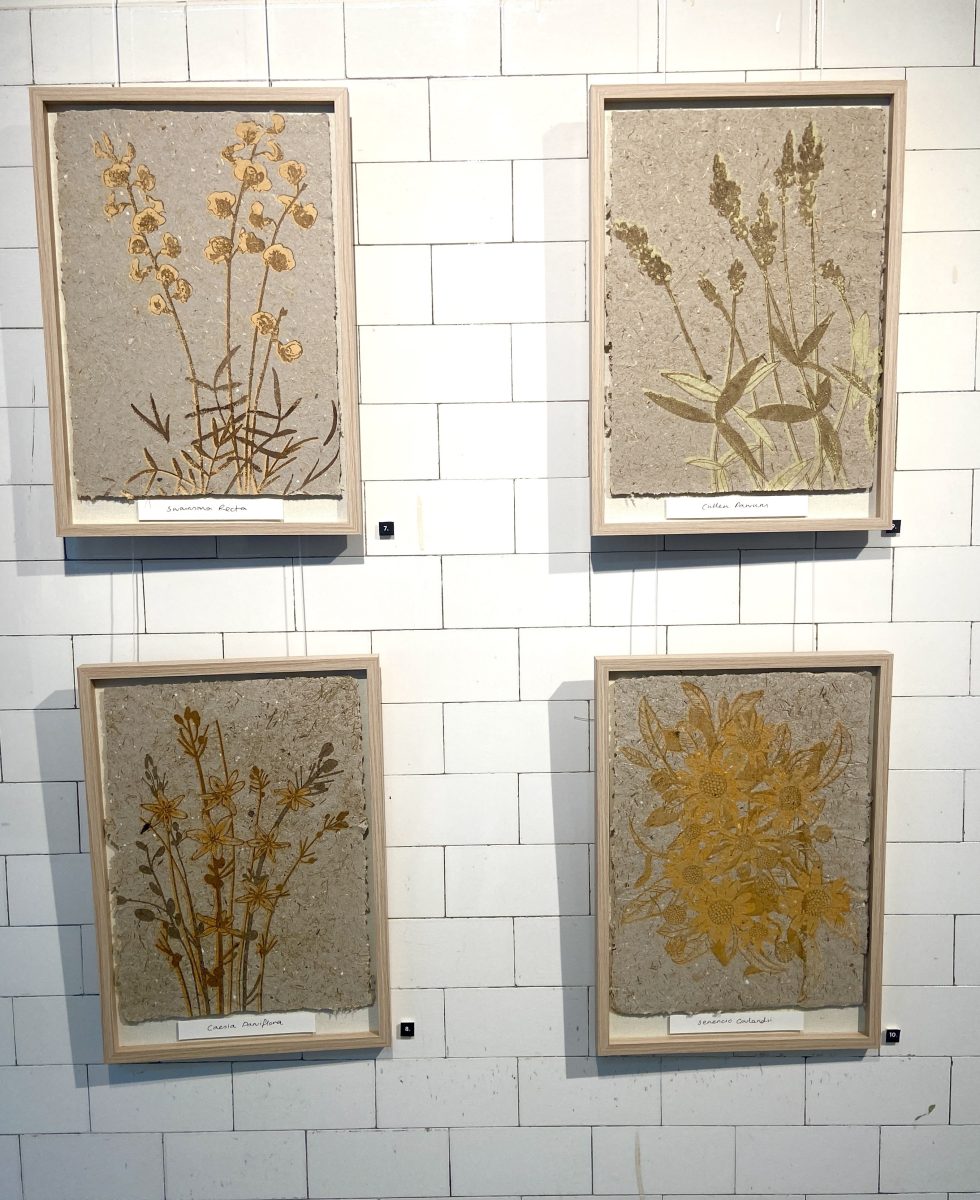
Cultivate includes a collection of finished screen prints along with examples of early experimentation. Photo: Chris Roe.
As well as experimenting with traditional pigment sources like copper, nettles and privet, Emily collected all sorts of local weeds to see what they had to offer.
“One in particular which comes up at the end of winter is oxalis, or sourgrass, and they’re just everywhere in Wagga and just have such an intense colour.
“So when I tried it out, I discovered that oxalis flowers make an incredibly rich yellow pigment that has a level of opacity that I just couldn’t ever depict.”
Emily is also excited by the idea that the chemical processes will continue in the artworks.
“Using these natural pigments, you can have reactions occurring with each other at that moment, but then over time as well, they will react to the environment around them, and, just like the plants would decay and change over time, I guess the inks will also follow that same trajectory.”
Emily feels that she has just uncovered the tip of the iceberg through this process and hopes to continue the work during a residency at Wagga Art Gallery through the 2025 Regional Artist Development program.
She will also be sharing the journey so far at this Thursday’s ‘Work In Progress’ event at the Station Creative Workspace on Johnston St.
“There’s a lot more to explore, and I’m so excited to do that!” Emily said.







